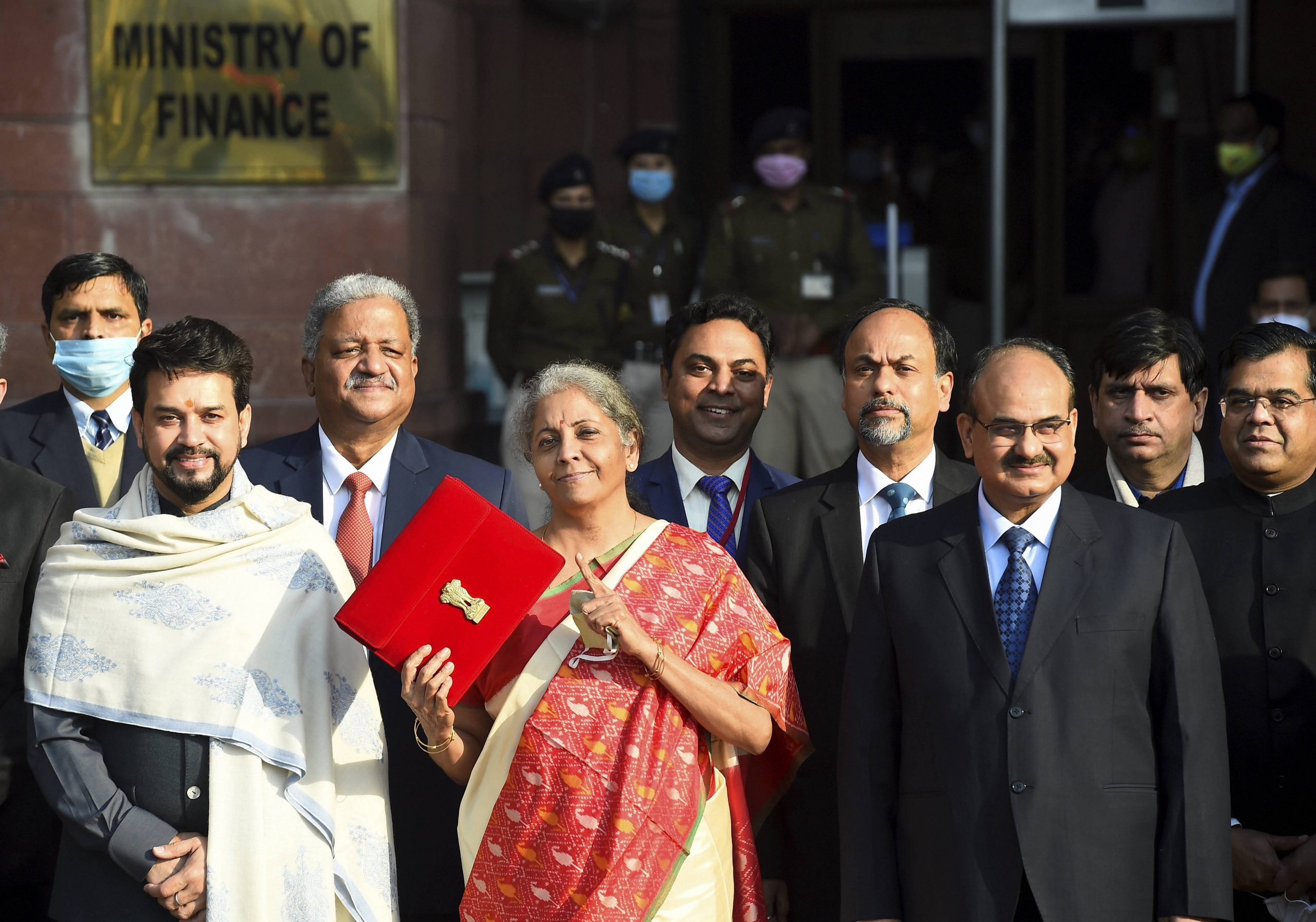Nirmala Sitharaman kept her promise of a Budget like “never before”. Till now, everyone is loving the budget for 2021-22. Equity investors have been celebrating with the biggest ever budget-day rally on the bourses. Analysts are exultant and India Inc has already raised a toast.
Perhaps the only segment which has not erupted in loud hurrahs is the Aam Aadmi, since a widely expected relaxation in income tax norms did not arrive. Except for a small relief for the old pensioners, the FM has maintained status quo on direct taxes. So, barring the common man’s income tax woes, the initial reaction to the proposals made by the Finance Minister in her Budget speech for 2021-22 this morning have all been positive.
For more stories from Sindhu Bhattacharya, click here
There is immense relief at the absence of a wealth tax – in fact, now new tax for the rich seems to have put the markets on fire. And despite a new agriculture infra cess, analysts were happy about no major new levies. India Inc has been breathless in its praise of a budget since it can see loosened purse strings, a mega infrastructure pipeline and continued benign corporate tax regime. (Live updates)
All the euphoria is despite the fact that the budget is clearly debt-fuelled expansion, with the fiscal consolidation goal kicked much further down the road and a massive increase in government borrowings.
Here’s what has brought all-round cheer:
- No new tax on the aam aadmi, no new wealth tax on the rich, no going back on the benign corporate tax regime for companies and near unanimity among experts about the new agriculture infra cess having minimal impact on prices. There was a general expectation of the FM levying some sort of new levy to undo the economic and fiscal impact of COVID-19 and additional government spending.
- A significant increase in government’s own capital expenditure. This will fuel creation of new infrastructure and likely have a multiplier effect in creating more jobs, boosting economic growth. Capital expenditure for 2021-22 has been raised by a third or 34.5% to Rs 5.5 lakh crore from Rs 4.39 lakh crore in the revised estimates of current fiscal. In 2020-21 too, the government has already raised capex significantly from the initial budget estimate of Rs 4.12 lakh crore.
- Healthy increase in the budget for healthcare even though there has been less-than-expected hike the defence budget. The lower defence budget increase comes in a year where India has faced unprecedented Chinese aggression and border tensions continue to remain high. But the increase in the health spend – even though some of this money is for spending over a six-year period – makes sense in a pandemic year. Total health budget for 2021-22 is nearly Rs 2.24 lakh crore from Rs 94,452 crore in the current fiscal. Defence budget is Rs 4.78 lakh crore.
- In the budget, Sitharaman has promised the establishment of a bad bank, fulfilling a key demand of sector experts and economists. The Asset Reconstruction and Management Company which Sitharaman talked about will act as an aggregator of all stressed assets (bad loans). Public sector banks can transfer non-performing assets or loans which have turned bad to this new entity. This means the balance sheets of public sector banks (which account for more than two-thirds of our banking system) will get strengthened. Remember, the RBI has already warned of bad loans rising exponentially in the next several months due to the Covid stress so the creation of a mega entity to help public sector banks is good news.
- Privatisation: The FM laid out an ambitious roadmap of getting more of a private sector foothold into what was, till now, seen as government preserve. She not only spoke of a Public Sector Policy which allows greater private role in all but those sectors the government will identify as strategic, Sitharaman also proposed a comprehensive plan for asset monetisation of PSUs. The disinvestment target for the coming year has been kept at Rs 1.75 lakh crore and a new mechanism for privatisation of loss-making state run companies is being drafted. A new list of companies for disinvestment is also being drawn up. Disinvestment in BPCL, Air India, IDBI Bank and Pawan Hans will be completed next financial year.
- A rather significant proposal made by the FM in her speech was privatisation of two unnamed public sector banks and one general insurance company in 2021-22. Since India nationalised its banks decades back, this would be the first instance when a national bank would be privatised and this single proposal lead to an unprecedented rally in the banking sector stocks on the bourses.
- The proposal to allow up to 74% foreign direct investment in insurance sector was also a key positive. As was the proposal to set up a long-term development finance institution to boost infrastructure financing.
And even though most of the budget proposals were received with cheer, some aspects will certainly raise concerns going forward.
Also Read: Budget 2021: No tax benefit for employer if delay in depositing employee PF
First, the ballooning fiscal deficit. The Budget has pegged the revised fiscal deficit for 2020-21 at 9.5% against 3.5% targeted at the beginning of the fiscal year. This is a huge, unprecedented increase, fueled of course by a double whammy of declining revenues and a manifold increase in government expenditure in a pandemic year.
But even for the coming fiscal, the elevated fiscal deficit figure remains a concern – the target is 6.8% of GDP alongside gross government borrowings of ₹12-lakh crore.
As per the new fiscal consolidation calendar, India will reach deficit figure of 4.5% of GDP only by 2025-26. Is a growth push which is built on debt sustainable? This remains to be seen.





